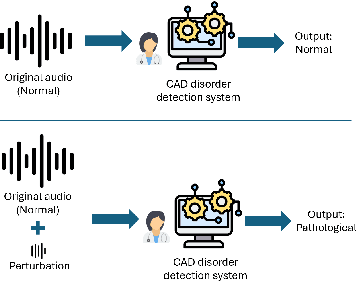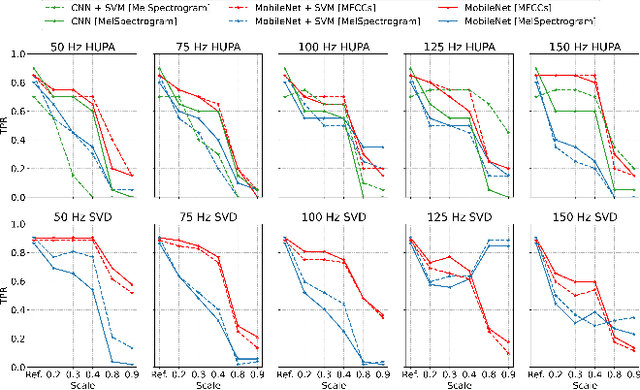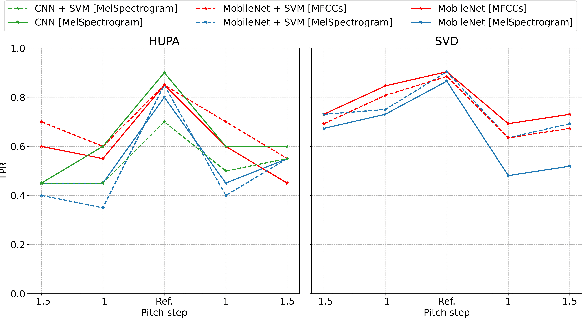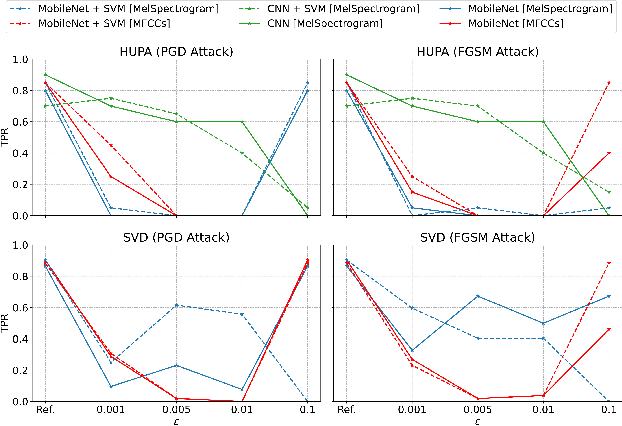Vulnerabilities in Machine Learning-Based Voice Disorder Detection Systems
Paper and Code
Oct 21, 2024



The impact of voice disorders is becoming more widely acknowledged as a public health issue. Several machine learning-based classifiers with the potential to identify disorders have been used in recent studies to differentiate between normal and pathological voices and sounds. In this paper, we focus on analyzing the vulnerabilities of these systems by exploring the possibility of attacks that can reverse classification and compromise their reliability. Given the critical nature of personal health information, understanding which types of attacks are effective is a necessary first step toward improving the security of such systems. Starting from the original audios, we implement various attack methods, including adversarial, evasion, and pitching techniques, and evaluate how state-of-the-art disorder detection models respond to them. Our findings identify the most effective attack strategies, underscoring the need to address these vulnerabilities in machine-learning systems used in the healthcare domain.
 Add to Chrome
Add to Chrome Add to Firefox
Add to Firefox Add to Edge
Add to Edge